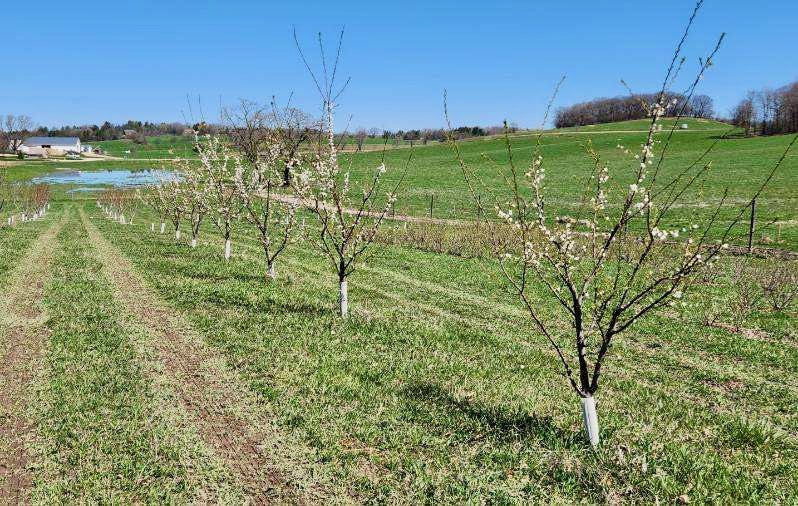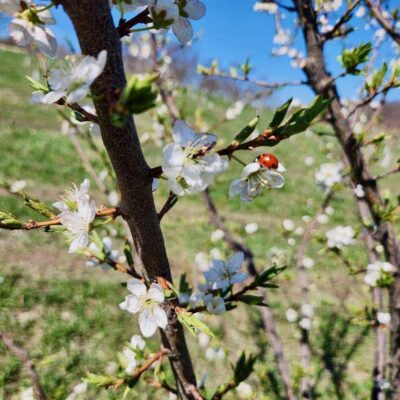
By Ben Kraus
After the Winter planning and pruning is complete, the nail biting begins. What conditions will Mother Nature have in store at the advent of this growing season? Will the temperatures gradually warm or be a rollercoaster of highs and lows? Will it be a wet or dry Spring? No matter the planning and preparation, an orchardist is always at the whim of the weather.
Temperature trends and precipitation patterns at the beginning of each growing season are crucial indicators for what the fall harvest will be. This year has been marked by numerous temperature fluctuations. With early warm temperatures in February, breaking dormancy in the orchard was a major source of concern.

If flower buds swell too early in the year, they are more susceptible to freeze damage that can lead to complete crop loss. In the last full week of April, as our apple blossoms were in the final stages of development before opening, a freeze warning was issued. At this point, blossoms can withstand temperatures as low as 28° F with minimal loss, any lower could prove catastrophic. Fortunately, the orchard at Gwenyn Hill is positioned on a slope making it less prone to Spring frost damage.
Very soon our tiny trees will be awash with blossoms, attracting pollinators with their sweet fragrance. Pollination is key to fertilization and the transformation from flower to fruit. Insect pollination is temperature dependent; honeybees and other native pollinators like mason bees and flies are less active when temperatures are below 65°F. While most plant pollination is facilitated by animals or insects, wind and rain can also be effective methods.
Pollinators are not the only insects on patrol in the orchard. There are other beneficials lurking in the leaf litter. The humble ladybug (lady beetle) is an orchard hero feasting on wooly apple aphids that overwinter in the furrows of apple tree bark. Lacewings and spiders also do their part to control leaf rollers and mites. These small but mighty arthropods are integral to orchard success.
Spring is a season of highs and lows, a constant search for balance. As temperatures continue to warm, the grass greens up, and we are reminded that Summer is just around the corner. With a new season, there will be new challenges and greater excitement as we all grow together.
Ben Kraus, Perennials Manager at Gwenyn Hill Farm, speaks for the trees.
